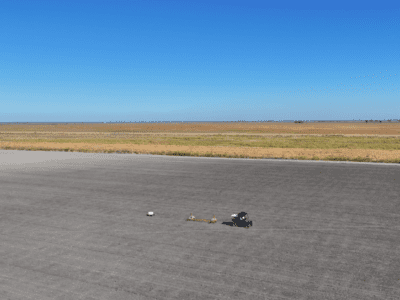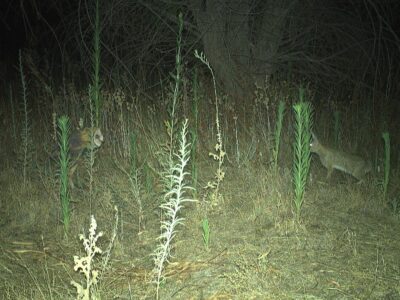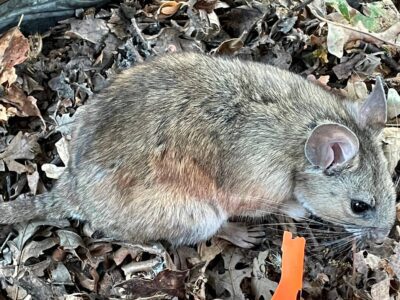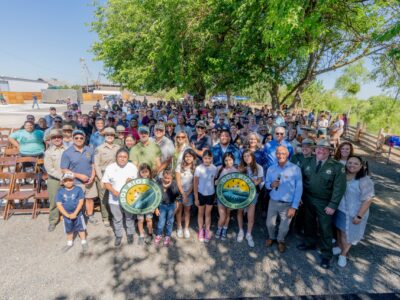In California and across the globe, communities are increasingly turning to river restoration as a natural solution to the escalating impacts of climate change to address issues like wildlife extinction, droughts, and floods.
Dams are coming down to revive habitat for critically threatened salmon. Beavers are being returned to places where they’ve been missing for generations. Floodplains are being reimagined as corridors for wildlife and people. Delta regions are being restored to provide buffers from rising waters. All important milestones that River Partners’ efforts directly support.

From farmers, to scientists, to policy makers, public recognition continues to grow that thriving rivers are essential for flourishing natural systems, human communities, and a world-class economy.
Despite growing support for riverway restoration and reviving freshwater ecosystems statewide, the journey toward restored floodplains can be as convoluted as a delta’s crisscrossing waterways. As we step into 2024, River Partners President Julie Rentner shares insights into the complexities, challenges, and opportunities ahead as we give new life to rivers for people and wildlife.
How is climate change influencing a shift toward nature-based solutions and river restoration?
Julie Rentner: Part of the reason we’re in trouble in California is that we got really excited in the last two hundred years about engineering solutions to create more farmable land. We built dams and levees to control water. We delivered it thousands of miles away, and built cities and economies based on that water. This applies to all built environments across the planet when it comes to our water systems.
Yet, the natural forces of our planet are much stronger than our best engineering. We’ve learned our engineered environments are crumbling in the face of climate change. Over time, they fall apart. They need to be repaired. And they are dependent on continued investment from the public for generations. It gets harder and harder to compel public investment in repairing crumbling infrastructure.
So, we want to instead start thinking about durability. We ask ourselves, seven generations from now, what investments in “infrastructure” are going to create spaces that are valuable to people, communities, economies, and to wildlife? What’s going to create cleaner air, improve flood safety, and create healthier watersheds that will be resilient to changes over time?
Perhaps building more dams and canals to try to hold water back and move it around isn’t the most durable or desirable solution. That’s where nature-based solutions and engineering with nature come in. We know that in 120 years, we want rivers to be able to meander safely across a wide floodplain that supports sustained populations of our native wildlife. Maybe in 60 years, we want our aquifers replenished with stream seepage as willow and cottonwood/sycamore forests transition to oak forests above. So, we look at the long-term physical dynamics of our watersheds over time, and take into account what climate change is telling us about changes in water cycles over time. We match that thinking with actions we can do on the ground today in partnership with our irrigation and flood districts, and we come up with innovative solutions that protect communities from flooding, recharge groundwater, sequester carbon, and create habitat for wildlife.
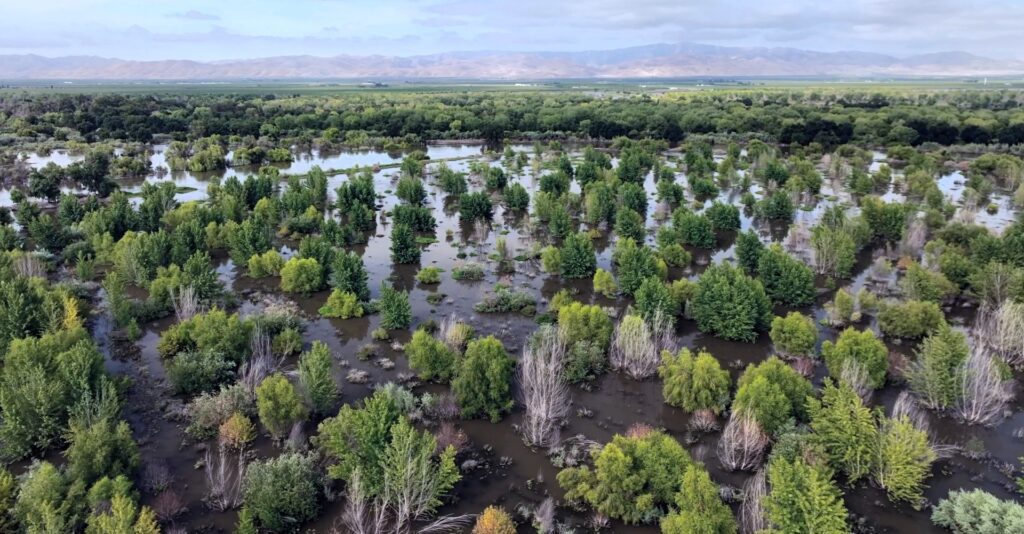
What challenges does River Partners encounter in building partnerships and securing funding?
Rentner: The media likes to blast a sensational news narrative: the locals disagree with the state, we’re fighting for water, we’re fighting over regulations, the government is stealing or ruining our way of life, etc. There’s tension, which leads to stalemates, even lawsuits or hard regulations.
However, we’ve learned time and time again that the way these tensions are portrayed doesn’t translate on the ground when you stand on the land with your neighbor.
We see so much humanity when we engage locally: “You and I both live here, you and I can both see that this is a problem, you and I both know that there’s an answer, so let’s work together to find it, even if we’re starting from different value sets.”
When we look at things together, solutions tend to present themselves. Yet, that’s the kind of engagement that’s really challenging for policymakers, elected officials, and government agencies to do because they often have narrow authorities and concern about overstepping the boundaries of those narrow authorities. It also takes a lot of time and trust, which is difficult when leaders of our government are stuck in election cycles.
Understanding that those are the limitations of the state and federal policies and investments, River Partners steps in with our offer. We can navigate with partners on the ground, pulling multiple funding sources together in a way that creates outcomes you couldn’t achieve without diverse partnerships and investments.
The result is a more holistic approach to fixing our ecosystems, fixing our communities, and thinking about what the future should look like.
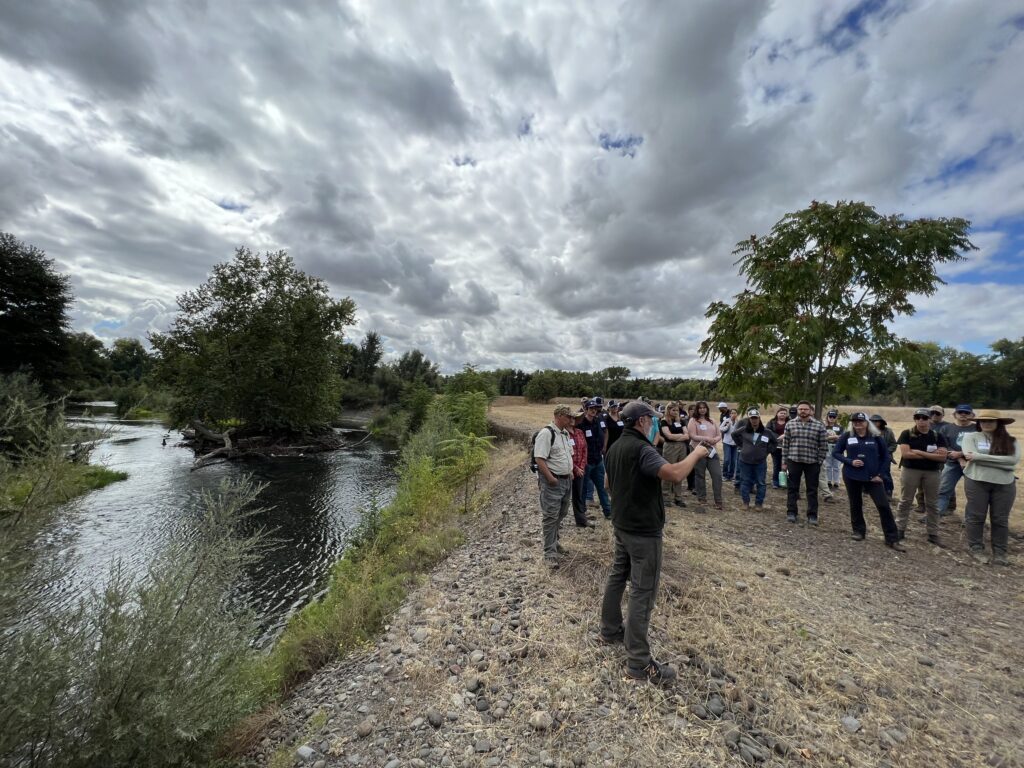
As state, federal, and global governments make commitments to freshwater conservation at an unprecedented scale, what challenges is California, River Partners facing?
Rentner: Our first main challenge is around workforce development: How do you recruit and train teams that can hit the ground with integrity and skill? How do you scale the transfer of information for workforce development from a handful of people to thousands of people?
Our second main challenge connected to scaling is funding. Even though there are amazing commitments to conservation, there are also big swings in investment coming out of state and federal government which derail our momentum in scaling up. For example, this year we’re dealing with a $64 billion budget deficit in California, so there are significant cuts to the state budget. That’s the opposite of helpful when you’re trying to scale up. Belt-tightening is the kryptonite of scaling.
We know that loss of biodiversity and the changing climate are real risks to the sustainability of humanity on planet Earth. If we are not taking care of the very things that subtend all the productivity, all the industry of California, that’s very short-sighted. So, we need to make sure voters understand how important natural resources are to the longevity and health of our economy.
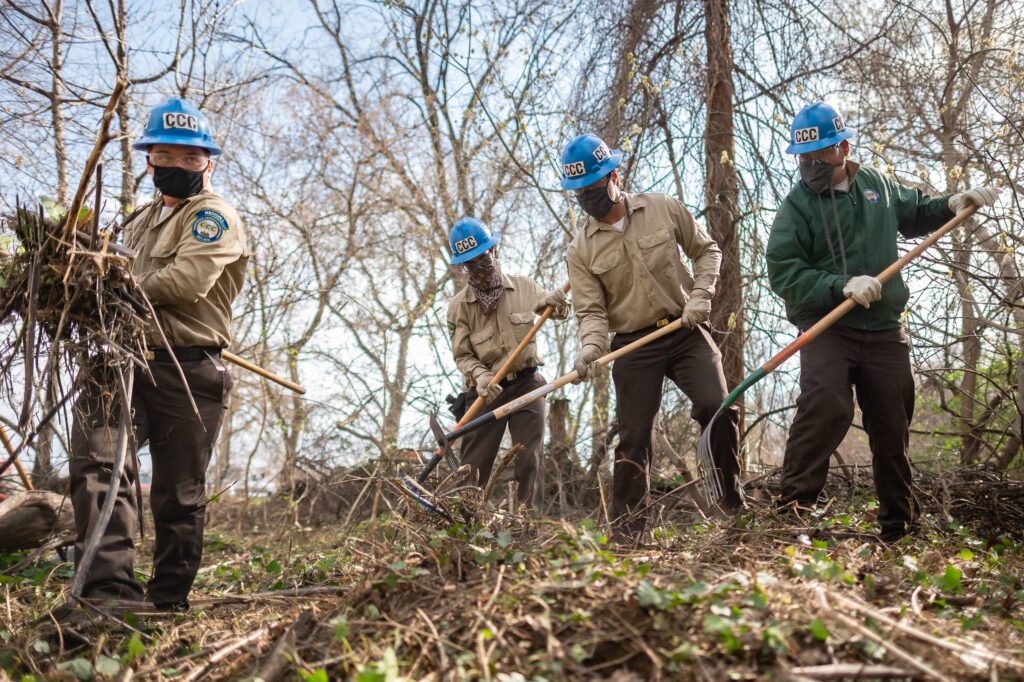
How are we ensuring we have enough native-plant material to meet the increased scale of restoration?
Rentner: In 2022, River Partners launched Heritage Growers Native Seed and Plant Supply based in Colusa. Heritage Growers is dedicated to increasing biodiversity in our restored landscapes, making new ecotypes, or varieties of species, available en masse for restoration across the state.
Heritage Growers has been incredibly successful in just two years. We’ve proven that we can produce diverse seed and locally specific native ecotypes at scale. This biodiversity is crucial to the success of restoration efforts.
Now, we have seed sitting on the shelf for River Partners’ restoration projects across the state, as well as waiting to be sold to customers engaging in their own restoration efforts. Our next hurdle is getting the word out, finding folks who run programs across the state that put seed down. We’ve expanded the menu of what’s available for restoration, so we need to get the word out and let them know.
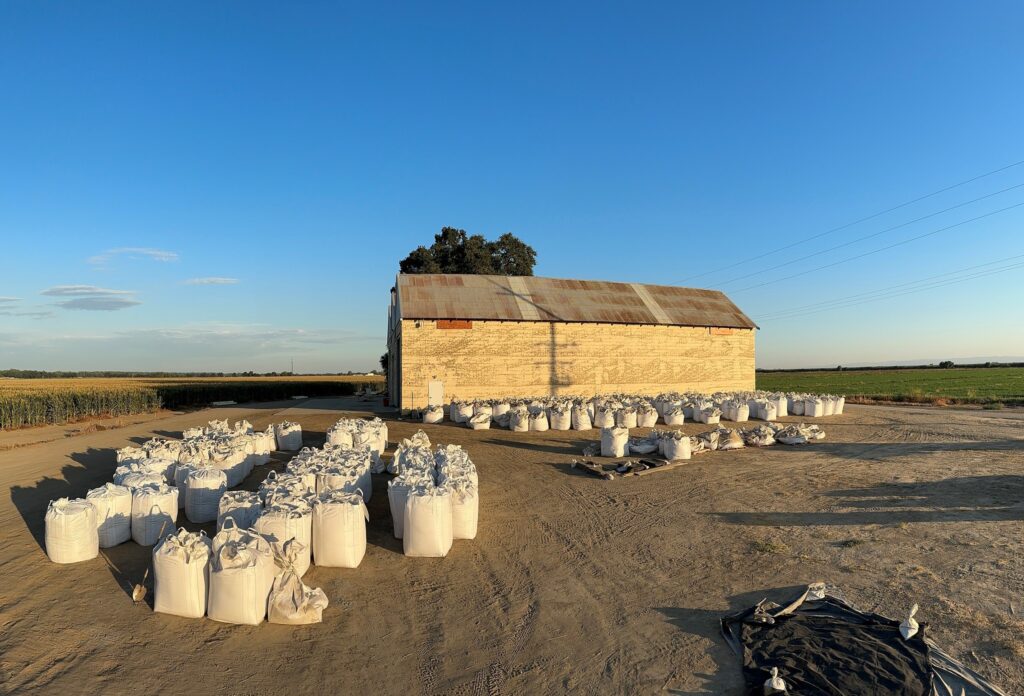
What are River Partners’ biggest needs in 2024?
Rentner: We need private support. Although 98% of our work is publicly funded through government grants, without private funding to cover the gaps, we wouldn’t be able to continue increasing the pace and scale of riverway restoration that’s so important this critical decade.
For example, River Partners was awarded $40 million for floodplain restoration in the San Joaquin Valley through last year’s state budget. You might hear that and think, “Great, River Partners is getting plenty of funding.” However, the reality is we had to find about $5 million of private funding to leverage the $40 million.
Another way to look at it is: If you give us $100,000, we’re going to take that and match it with $1 million in public money. That’s an incredible return on investment in terms of ecological outcomes.
The bottom line is, without the initial seed of private support, we simply cannot acquire the money we need to work. You can help us make a difference by donating today.

